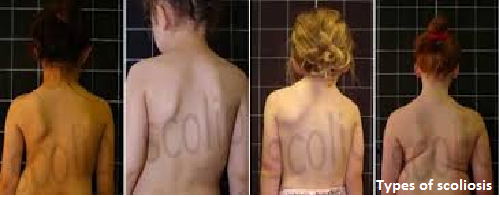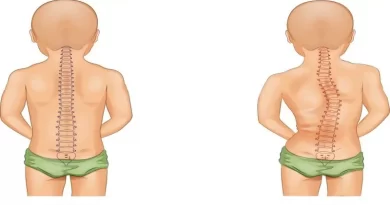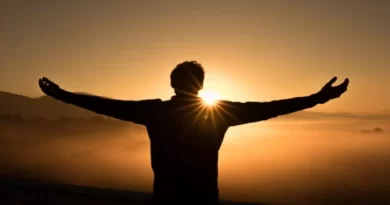Types of scoliosis: Causes and prevention
Scoliosis is the postural deformity related to the misalignment of the spinal curves and often experiences back pain and discomfort in sitting or doing any activity. Though the conditions differ from person to person with the differences in the degrees of the curve. It may develop in early childhood or throughout adolescence. There are mainly two types of scoliosis structural and non-structural.
Table of Contents
Structural scoliosis
It is the common category of scoliosis. Involves the rotation of the spine curvature from side to side. Needs to be treated as soon as possible in the early stages before making the conditions worse. The cases are considered permanent.
Non-structural scoliosis
It is also known as functional scoliosis. The causes are temporary and involve the sidewards spine curvature. Spinal rotation is absent in this case.
Structural scoliosis is considered to be more typical and harmful as the deformity caused does not straighten out on itself and possibly results in a more severe deformity.
The person with non-structural scoliosis if found lying down or bent forward, then the scoliosis curve will move away while holding on to that position.
Types of structural scoliosis
Idiopathic scoliosis
This type of scoliosis can occur in early childhood and often recorded in adults. The exact cause for this to happen is still unknown. Some studies suggest that some genetic factors are involved in the deformity, but a need of further research and investigation is needed.
80% of the scoliosis cases are idiopathic, thus, the exact reason is unknown.
Idiopathic scoliosis is further categorized into 3 parts:-
- Infantile idiopathic scoliosis ( evolve from birth to 3 years old)
- Juvenile idiopathic scoliosis ( evolve from 4-9 years old)
- Adolescent idiopathic scoliosis ( evolve from 10-18 years old)
Degenerative scoliosis
often called “adult-onset scoliosis” and can be told of as sidewards curvature of the spine caused due by the degeneration of the joints and intervertebral disc, the moving parts of the spinal body. The spinal asymmetry and degeneration can occur as the person matures, throughout their adolescence.
When degenerative scoliosis starts being symptomatic, usually experienced with vigorous back pain and intense sensations that just tear down the legs, commonly known as sciatica. And often makes it difficult to walk.
Neuromuscular scoliosis:- Another name for this deformity is myopathic scoliosis. It develops in those individuals who cannot walk due to some neuromuscular imbalance such as muscular dystrophy and cerebral palsy.
Congenital scoliosis
This condition reveals out quite exceptionally. On account, only one individual may acquire among 10,000. It develops in the uterus and stays in infancy. Some misalignments in the vertebrae or other parts of the spine are the noticeable outcomes of the condition. The patients who are younger than the patients of typical scoliosis patients will encounter backaches and numbness or left curved thoracic spine.
If any individual is diagnosed with the above symptoms, the physician will recommend additional diagnostic tests such as MRI and CT scan to detect the condition, if there is any possibility of spine tumors or lesions which cause scoliosis.
Causes of non-structural scoliosis
Well, non-structural scoliosis is rare, but there are certain ways by which it can occur:-
- Differ heightening of legs:- if one leg is longer than the other, then it may cause discomfort and an awkward posture while standing.
- Muscle spasm:- muscle spasm or muscle contraction in the back is the major cause for such scoliosis. Due to the spasm, the spine may be dragged in one direction and a side curve may form.
- Inflammation:- if any side of the spine acquires inflammation then a scoliosis curve may form. Pneumonia and appendicitis can be the possible reasons for developing them.
Prevention
Before the condition goes worse, it’s better to control it without any medications and treatment. In the early stages, the condition is not as bad, and if diagnosed early then the chances of its cure increase.
But why do we wait to become the situation worst, when we can prevent our posture from any misalignment. There are enough preventive measures by which, if implemented properly, one can get rid of the deformities even in the future. Though there is no agreeable evidence that scoliosis can be prevented by some exercises or improving posture, we need to follow the posture rules to not to acquire any misalignments.
Here are a few steps to make a nod with and follow in your daily routine.
- Routine checkups for scoliosis, if you are feeling the symptoms for long.
- Treatment of the comprehensive underlying disease with scoliosis.
- Avoid lifting heavy weight with one hand or forcefully.
- Routine examination of the newborn child or children below 15 years.
- Work in good posture. Don’t work or do anything in an uncomfortable posture.
- Teach your children the right way to sit and stand.
- Don’t be underconfident. As it can affect your posture possibly.
Treatment
We have discussed the types of treatment in the previous article about postural deformities and there we came up with the last option, which is surgery when the condition cannot be tackled with the other alternatives. There are various types of scoliosis surgery that doctors recommend after examining the condition of the spine. Depending on the requirement of the patient’s spine.
Conclusion
Scoliosis is common among postural deformities. It has two main types: structural and non-structural scoliosis. Structural are more permanent ones and caused due by the rotation of the spine curvature. Immediate action is needed to treat this condition before getting worse. On the other hand, nonstructural scoliosis is temporary and involves the side-to-side bending of the curvature of the spine. Often known as functional scoliosis. Structural scoliosis has its subcategories, such as idiopathic, degenerative, neuromuscular, and congenital scoliosis. Congenital scoliosis is the rarest one. Causes may involve differences in the lengths of legs, muscular spasms, inflammation in any side of the spine. The prevention that is needed does not to lift heavy weights and do your regular examination of the underlying condition if you feel the symptoms. Adopt good posture habits, and teach your children to.
Frequently Asked Question
What are the 3 types of scoliosis?
Scoliosis is categorized into two types: structural and non-structural and non-structural. In structural scoliosis, there are three types of scoliosis named idiopathic, degenerative and cognitive scoliosis. Neuromuscular scoliosis also comes under structural scoliosis. However, congenital scoliosis is rarest.
What are the 4 types of scoliosis?
People are familiar with only 3 types of scoliosis, but there are four types of scoliosis, named idiopathic, neuromuscular, congenital, and degenerative scoliosis.
What are the 7 types of scoliosis?
Congenital scoliosis:- this spinal abnormality develops in the womb and one of the rarest types of scoliosis that affect only one in 10,000 newborn babies.
Early-onset scoliosis:- when the diagnosis happens before the age of 10, is known as early-onset scoliosis. Usually, the diagnosis of scoliosis happens in adolescence and that’s why it’s known as adolescence scoliosis.
Adolescent scoliosis:- mostly children age between 10-18, affected by this disease. And this is the most common type of scoliosis during the onset of adolescence.
Neuromuscular scoliosis:- This type of scoliosis develops due to several issues in the brain and muscles. When the nerves of muscles are not aligned correctly, they cause a curved spine.
Degenerative scoliosis:- this causes due to disturbances in the intervertebral disc, which helps in the movement of the spine. However, it’s also known as adult-onset scoliosis.
Scheuermann’s kyphosis:- it’s typically diagnosed in adolescence and affects the cervical and thoracic spine. Where scoliosis forms the curvature of the spine moves from one side, it moves rounded forward in kyphosis.
What is the most common type of scoliosis?
Idiopathic scoliosis is the commonest type of scoliosis, especially among girls about 8 times as much as boys. It may be inherited. It can be inherited by an adult from someone in their family. Although there are other factors involved too in causing the disease. In some cases, the scoliosis pattern is mild and requires no treatment at all, but an early diagnosis and management.
What does scoliosis pain feel like?
Most people with scoliosis feel stiffness and tightness in their lower back. As the body tries to adjust the misaligned curvature, causing muscles and ligaments to stretch and strain. They feel their bodies being pulled and stretched, which makes them uncomfortable with their bodies. Patients with scoliosis often feel fragile and concerned about trying different activities and getting any severe reaction from their spines.
At what age is scoliosis usually diagnosed?
Well, scoliosis may occur during infancy, childhood, or the onset of adolescence. The Primary age for the initiation of scoliosis is 10-15 years. Scoliosis may occur in both genders equally, however, girls are 8 times more vulnerable for having the condition than boys and more likely to require treatment for the progress of magnitude of the spinal curve.
What happens if scoliosis is left untreated in adults?
Some mild cases of scoliosis don’t require treatment and treat itself by early detection and management. Although, the moderate to severe scoliosis condition if stays untreated can create an increase in pain and increased deformity along with a high risk of heart and lung disease. Scoliosis is a postural deformity with a sideways leaning of the spinal curvature leading to misalignment of the spinal discs and discomfort in doing physical activities.
What is the best age for scoliosis surgery?
Usually, the surgeries aren’t performed on the children. As of now, premature surgery is recommended for teenagers whose scoliosis curve measures above 50 degrees. Surgery will be left as the only option when your doctors would say your child needs immediate treatment. Surgery is an invasive procedure, every surgery is invasive and takes a long time to show the outcome and recovery, and especially if it fuses several of the 24 vertebrates.
Is scoliosis a disability?
Yes, scoliosis is a disability and the social security administration offers benefits for scoliosis sufferers. Scoliosis is a sideways curvature of the spine leading to various side effects in normal posture and health problems. So, if you match with the benefits requirements which are mentioned in SSA, you will get the benefits that will help you in many ways, like related to education, and career.
Is walking good for scoliosis?
Yes, it is. Walking and running are as good as hiking for scoliosis patients. However, sprinting would be better than long-distance running. Besides this, cross-country skiing is also a fantastic exercise for adolescent scoliosis. Walking is always on the benefit side in most health conditions.



